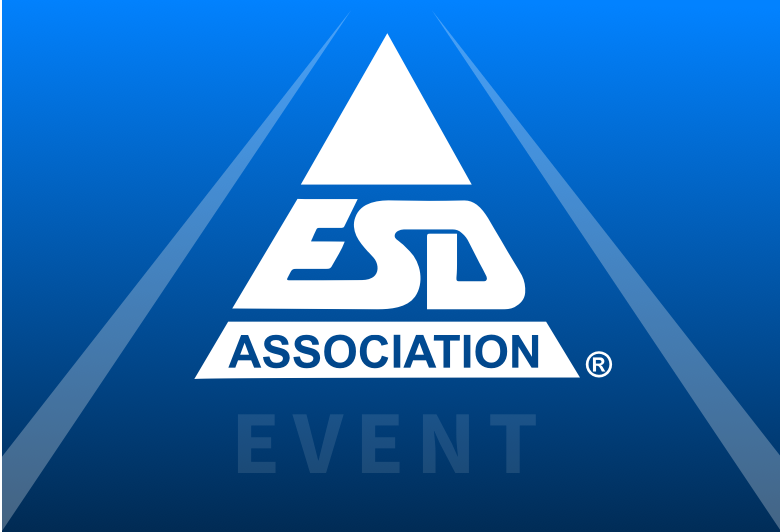Manufacturing Tutorials
- Date & Time:
- September 14, 2025
- Location:
-
Riverside Convention Center
3637 5th St, Riverside, CA 92501, USA
Overview
$950 for 3 tutorials:
Electrical Fields and Particles - Practical Considerations for the Factory and Induction Charging (FC262)
ANSI/ESD S20.20 recommends that process essential insu¬lators with a measured electrical field strength of >2000 volts at 1 inch should be kept a minimum of 12 inches from ESD susceptible items. In addition, for close proximity or contact, the standard requires that insulators have an electric field of <125 volts at 1 inch. Just what are the practical consider¬ations of these statements? What is the size of a charged object and magnitude of an electric field that imposes a real risk? The goal of this tutorial is to show, by demonstration, the field strength and resulting induction ability from different sized objects. Electric fields are the major contributor (be¬yond gravity) to attraction of particles to surfaces. The sci¬ence of particle attraction, adhesion and particle removal is very complex but it is important to have a fundamental under¬standing if your production processes involve cleanliness of surfaces. This tutorial will cover the important considerations of particle dynamics. The audience should gain a practical perspective of size and distance as related to charged ob¬jects, electrical fields, induction, and the interaction of electric fields with airborne particles.
Electrostatic Charging and Induction
Electrostatic Charging and the subsequent likelihood of induction charging in industrial processes are important to understand to avoid substantial risks to sensitive devices, materials, and other items including flammable atmospheres. This course discusses electrostatic charging processes and how induction charging occurs.
Course Outline:
- Introduction – Course instructor, ESD Association and ESDA Services, LLC
- Electrostatic charge liberation,
- Triboelectrification,
- Contact charging,
- Principles of Induction
- Review of incidents involving induction
- Summary
- Discussion and questions
Learning Outcomes:
Attendees will learn about how static electricity forms and how to recognize induction charging potential in processes.
Practical Applications of Ionization (FC365)
Ionization is a powerful tool in the toolbox of an ESD control practitioner. Our half-day tutorial, “Ionization Issues and Answers for the Program Manager” goes into depth about the physics of ionization, and general applications. This tutorial builds on the fundamentals and provides added information about applications of ionization that go beyond those mentioned in the original tutorial. The introduction part of this tutorial begins with a review of the physics of ionization before entering the discussion of applications. Ionization is used in a wide variety of industrial applications to reduce charge on plastic and paper films, extrusion processes, pharmaceutical and other powders, petrochemical processing, printing and graphic arts, as well as the wide variety of electronic component and equipment production processes. Numerous demonstrations will help demonstrate the power of ionization to reduce charges on materials. In addition, it is necessary to understand the limitations of ionization and recognize where it is useful and where it is not.
Hotel Information
Rate: $157
Book By: August 18th
Marriott Riverside at the Convention Center
3400 Market Street
Riverside, California 92501
Future Events
-
2025
+
-
April 23-24, 2025
Tutorials
Bangalore Taj Vivanta, VIVANTA BENGALURU, RESIDENCY ROAD, 66, Residency Road, Bengaluru 560025, Karnataka, India -
September 13-15, 2025
Tutorials
Riverside Convention Center , 3637 5th St, Riverside, CA 92501, USA -
September 13, 2025
Tutorials
Riverside Convention Center , 3637 5th St, Riverside, CA 92501, USA -
September 13, 2025
Tutorials
Riverside Convention Center , 3637 5th St, Riverside, CA 92501, USA -
September 14, 2025
Tutorials
Riverside Convention Center , 3637 5th St, Riverside, CA 92501, USA -
September 14, 2025
Tutorials
Riverside Convention Center , 3637 5th St, Riverside, CA 92501, USA
-
